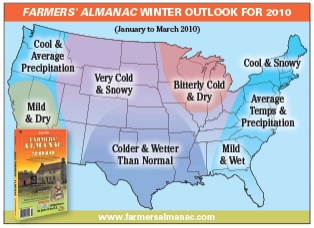This was the first week in Wisconsin where the temperature was actually cold – mid 50s earlier, and now around low 60s. Fall is pretty much here, which is my favorite season but still attunes me towards dreadful anticipation of the winter ahead. The last two years – coinciding with our move to Wisconsin from Texas – have been unusually cold and heavy snowfall, so we really got pummeled. I actually broke down and got a snowblower near the tail end of last year’s winter, and ended up using it only twice (after a whole winter of backbreaking manual shoveling, including a minor bout injury). So I am prepared, but anxious to see what lies ahead.
According to the weather forecasters, there’s a resurgent El Nino in the pacific which is going to mean bitter cold and heavy snow for the east coast. But my concern of course is the upper midwest, and this year it actcually looks like there’s general agreement that while it will still be cold, there won’t be as much snow this year for us as there was the past couple:
The Midwest and central Plains, which have been hit hard the past two winters, may end up with a lack of snowfall this year. Places like Chicago, Omaha, Minneapolis and Kansas City may have below-normal snowfall and could even average a bit milder than past years.
A warm and somewhat dry weather pattern is expected from the Pacific Northwest into the northern Plains.
The Farmer’s Almanac is in agreement, calling the winter season for the midwest “bitterly cold and dry”:
According to the 2010 Farmers’ Almanac, this winter will see more days of shivery conditions: a winter during which temperatures will average below normal for about three-quarters of the nation.
A large area of numbingly cold temperatures will predominate from roughly east of the Continental Divide to west of the Appalachians (see map). The coldest temperatures will be over the northern Great Lakes and the Upper Peninsula of Michigan.
(…) Near-normal amounts of precipitation are expected over the eastern third of the country, as well as over the Pacific Northwest and Northern Plains, while drier-than-normal conditions are forecast to occur over the Southwest and the Upper Midwest/Great Lakes.
But how well do my recollections of the past two years being crazy cold and insanely snowed compare with the reality? Since Wisconsin’s climate data is available online, it’s easy to see just how normal or not the recent years were. We moved to Wisconsin (specifically, Marshfield) in July 2007. The closest major city is Wausau for which the data is available. Since we were coming from the Houston area, to us it felt like the whole of the 2007-2008 winter season was bitterly cold and snowy. In retrospect, the daily temperatures for late 2007 were well-bounded by the 30yr averages, except for a colder spell in late Nov – early Dec. As the winter continued past the new year into early 2008, there were wild temperaure swings (e.g. +45 to -20 F in two days) from January to mid-February, and then it was consistently and significantly colder. On the whole, then, it was indeed a colder-than average winter, though even average in Wausau is still bitterly cold for a Texan transplant. As far as snowfall for that winter goes, we had a crazy big snowstorm on Dec 1st (which I got caught in – long story) and then kept on getting big snowstorms almost every two weeks until mid-January, after which we started getting more regular but smaller snows. But by the end of that season we had exceeded the average snowfall by 20 inches. Keep in mind that even the average was almost five feet of snow! Even an average year would have been tough for an ex-Texan, but that year was just crazy.
We moved to Madison in summer of 2008, so I turn my attention to the Madison-area data instead of Wausau for that season. The early winter, in late 2008, was colder than average, though we had a warm spike in late December thru the new year. Early 2009 was actually average until mid-Jan, at which point it got really cold again. Temps were again wildly variable until mid-March. As far as snowfall that season goes, though, it was a nightmare. December 2008 was the snowiest December on record, and we just kept on getting hit. We kept getting hit with medium to large-size snowfalls all the way into early April! The scary thing is that it was even worse in Madison the prior year (while we were in Marshfield).
The bottom line: it was indeed exceptionally colder, and snowier, these past two years. But they really were outliers; look at the 2006 season in Madison and you see the snowfall was much more reasonable, and was even abnormally warm. While a warm, dry winter would be heaven, I’m willing to suffer the cold if it means less snow. I hope these forecasts are accurate; I’ll be revisiting this topic in April to see how they fared 🙂
